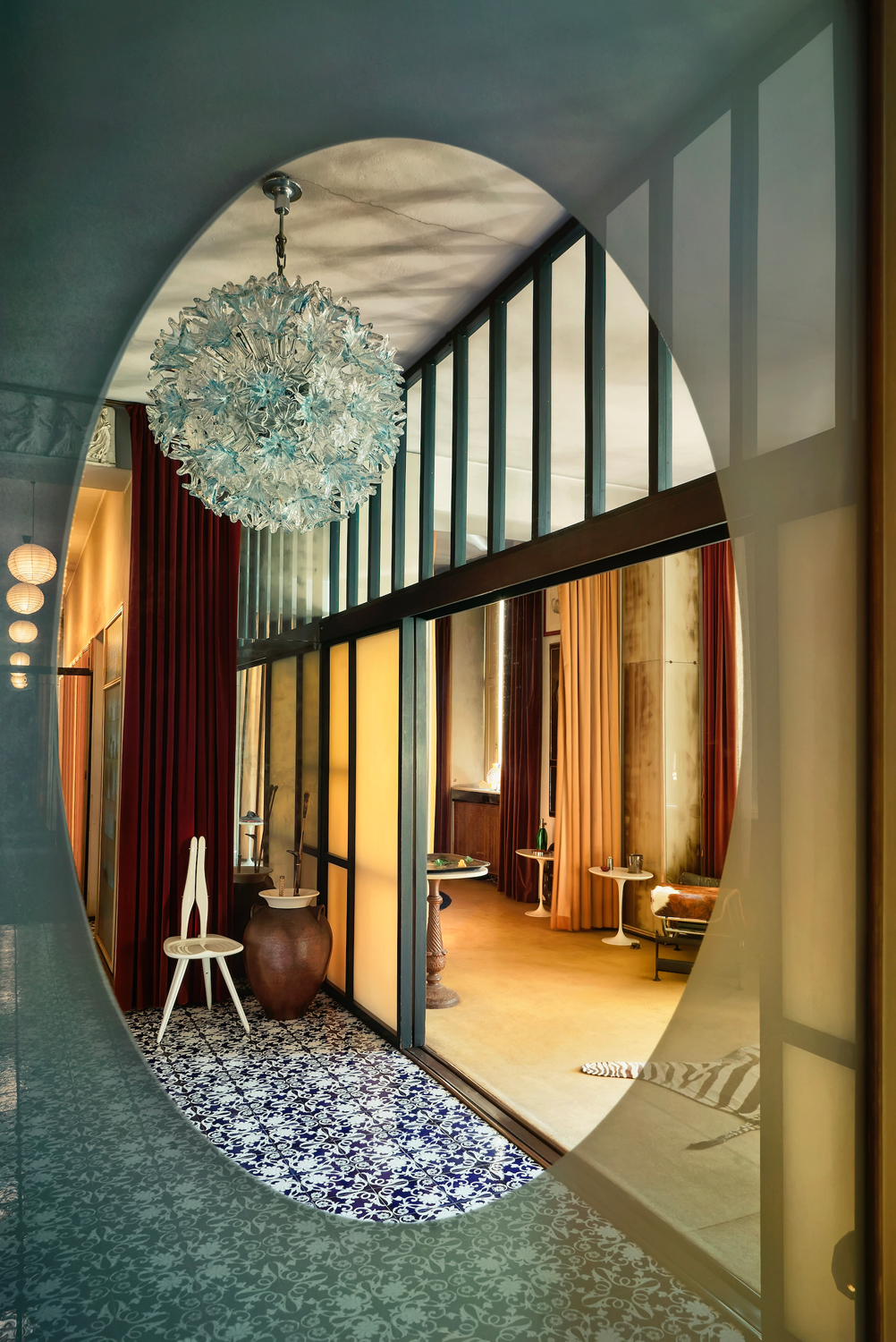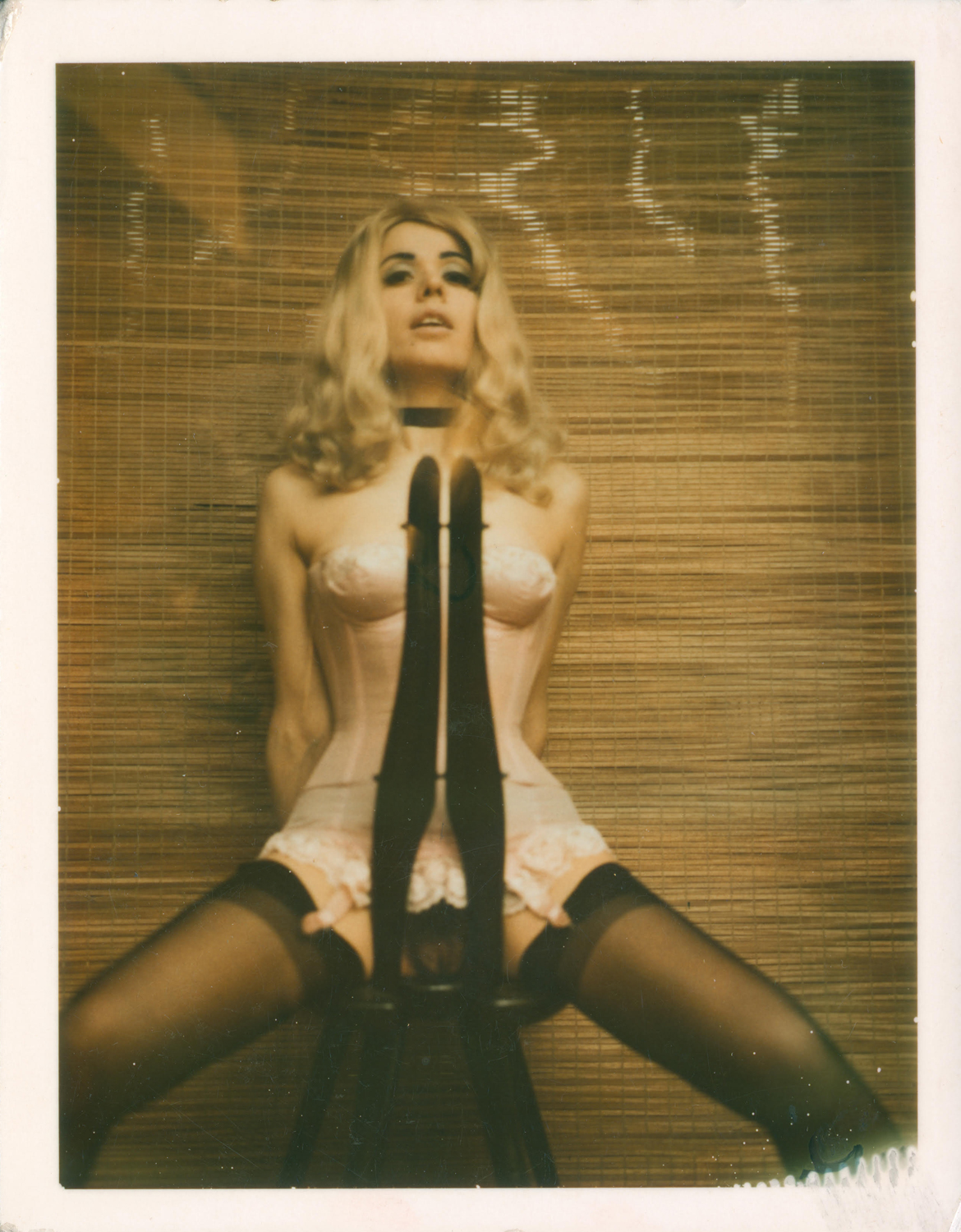The private museum, dedicated to the late Italian designer Carlo Mollino, is a cultural establishment for the posttruth, anti-Enlightenment age
Mirrored walls, custom erotica, tales of the supernatural: no wonder Museo Casa Mollino has gained a cult following. Since opening in 2000, the former home of – and now museum to – the designer, architect and photographer Carlo Mollino, on Turin’s Via Napione, has become the source of an implausible occult mythology. The owner and founder, Fulvio Ferrari, is convinced that Mollino designed the interior as a personal pharaoh’s tomb, each aspect of the decor arranged for his transition to the spirit realm. While the theory has proved popular, it is almost entirely speculative. When Mollino died, in 1973, he left no explanation as to his intentions for the apartment, apparently had never lived there and had kept its existence a secret (even from friends such as the artist Carol Rama, who lived across the street). He purchased the property in 1960, one of several he owned. He kept another in the hills outside Turin for taking erotic Polaroids – another covert pastime – picking up sex workers and dancers, dressing them in costumes and staging them for his camera. After his death, over a thousand images taken between 1962 and 1973 were discovered at the Via Napione apartment, where some of them were also shot. To this day they remain the only known evidence of any use of the residence.
Casa Mollino exemplifies the way in which history is written by those who own the keys to the museum, and shaped to serve their interests. An eccentric seventy-five-year-old who never met Mollino, Ferrari has dedicated so much time and money to the project that it’s no longer clear where one man’s ideas end and the other’s begin. Despite the extraordinary leap of imagination required to turn the apartment of a rich man with a penchant for pornography into a mystical sanctum, the tomb theory has come to dominate Mollino’s posthumous legacy. It has been indulged by publications including The New York Times and The Guardian, and featured in the literature at Christie’s auction house, where five items of Mollino-designed furniture have sold for upwards of $500,000 since Casa Mollino opened. It has also inspired numerous exhibitions, the most recent of which is Mollino/Insides, opened at Collezione Maramotti this autumn, where a selection of Mollino’s Polaroids are on show alongside works by Enoc Perez and Brigitte Schindler, two artists apparently drafted in to enhance the mystique. They are not the only ones. While visiting the apartment in 2019 I watched a screening of Yuri Ancarani’s film Séance (2014), in which a psychic medium sits at Mollino’s dining table and converses with his spirit. During a panel discussion at the survey show Carlo Mollino: Maniera moderna at Haus der Kunst (2011–12), an absurd debate even ensued as to whether Mollino could be considered a demigod. Ferrari, who contributed to the curating, argued that he could. After all, how else to explain his ability to design buildings, furniture, skis, even a car to compete in the 24 Hours of Le Mans?

© the artist
How else indeed. Born in Turin in 1905, the son of a wealthy engineer, Mollino was a man of independent means and a lifelong bachelor. Rather than a demigod, his desire for privacy, and the cloying extravagance with which he decorated the Via Napione apartment, call to mind the protagonist of Joris- Karl Huysmans’s novel À Rebours (1884), Jean des Esseintes: an affluent, solipsistic aesthete who shuts himself off from the world in order to realise his fantasies. (It would not be a surprise to discover des Esseintes’s jewel-encrusted tortoise suffocating under the weight of its carapace next to the giant clam shells in Mollino’s living room.) Perhaps unsurprisingly, Mollino was dismissed as a dandy by members of the Arte Povera movement, but he was also, without doubt, extremely talented. His sui generis designs often have a powerful libidinal ambience that spills over into his photographs. At the Teatro Regio in Turin, completed in the year of his death and arguably his most significant achievement (the architect had won a competition to redesign and rebuild the eighteenth-century structure, which had been devastated by fire in 1936), the plush red, white and pink interior is ribbed by the facade of the boxes like a larynx or vagina. Among the Polaroids on show at Mollino/Insides is an image of a woman dressed in a corset and collar straddling one of his own designs: the Fenis chair, first manufactured in 1959. Made from two curved, slender pieces of wood, the chairback rises in front of her like a forked tongue; her vagina is exposed through a small opening in the design.
After Mollino died, heirless, the apartment was sold. When it returned to the market in 1999, stripped of the majority of the original decor, it was bought by Ferrari and his son Napoleone. The pair set about buying back furniture according to an inventory made following Mollino’s death and treating the placement of objects as a riddle. Ferrari believed that the key lay in a small drawing of Tutankhamun’s grandmother Queen Tiye printed in the frontispiece of Message from the Darkroom, a book on photography Mollino self-published in 1949. Ferrari invited a curator from the Egyptian Museum in Turin to the apartment, who drew his attention to an embroidery on a cushion in the bedroom based upon an ancient Egyptian painting of a boat. This was Ferrari’s ‘eureka’ moment: the boat was the vessel used to transport pharaohs from this world to the next, the elaborately carved wooden bed on which it was placed a sarcophagus. Every detail of the apartment was subsumed into the mythology. The white marble dining table? A lotus leaf, symbol of rebirth. The zebra-skin rug? A map for navigating between dimensions. Even the custom pornography has been sanitised to fit the narrative. ‘He had little interest in sex,’ says Ferrari, apparently willing to overlook Mollino’s evident immersion in sexual fetish. The portraits were instead ‘inspired by the Egyptian civilisation in which statuettes called ushabti were placed in the crypt’.

More shrine than museum – and predicated on intoxicating narrative rather than verifiable facts – Casa Mollino is a cultural establishment for the posttruth, anti-Enlightenment age. The embrace of the tomb theory is particular to an era in which occult and nonrational thinking has been normalised, politicised and monetised. Among artists and institutions identifying with witchcraft, magic has become a fashionable way to signal female empowerment and alliance with the marginalised, evident in the work of contemporary artists including Tai Shani and the revival of Dorothea Tanning and Hilma af Klint.
Yet the vogue for the supernatural, and a tendency to conflate it with emancipatory politics, ignores the reality that occult thinking often serves a conservative agenda, and goes hand-in-glove with the rise of anti-intellectual sentiment. Neospiritualisms are also baked into the successes of the QAnon prophecy cult, the Trumpian regime of ‘alternative facts’ and the corporate paganism of the wellness industry. As Theodor Adorno warned in Theses Against Occultism (1947), rather than empowering the oppressed, the occulting of culture may in fact do the opposite: mystify structural inequality and undermine precisely the kind of discourse required to hold power accountable.
As the cultural sector’s uncritical flirtation with the Mollino mythology shows, what is allowed to flourish when reason is put aside can be deeply unprogressive. The Ferraris have now owned the apartment on Via Napione for 21 years – eight more than Mollino. During this time, Mollino’s motivations and desires have been reconstructed along with the interior, his possessions transformed into props in a plot worthy of a Dan Brown novel. In the process the real-world context of money, sex and power in which he operated has been obfuscated by smoke and mirrors. While he may have been a talented designer, a wealthy, modern European artist paying underprivileged women to pose naked is nothing if not predictable. In the end, what haunts the ‘tomb’ is depressingly familiar: the phantasm of male genius – mascot for Western male exceptionalism, obscurer of structural bias – disguised in a hokey pharaoh costume.
Mollino/Insides is on view at Collezione Maramotti, Reggio Emilia, through 16 May
Rosanna Mclaughlin is a writer and editor based in London
